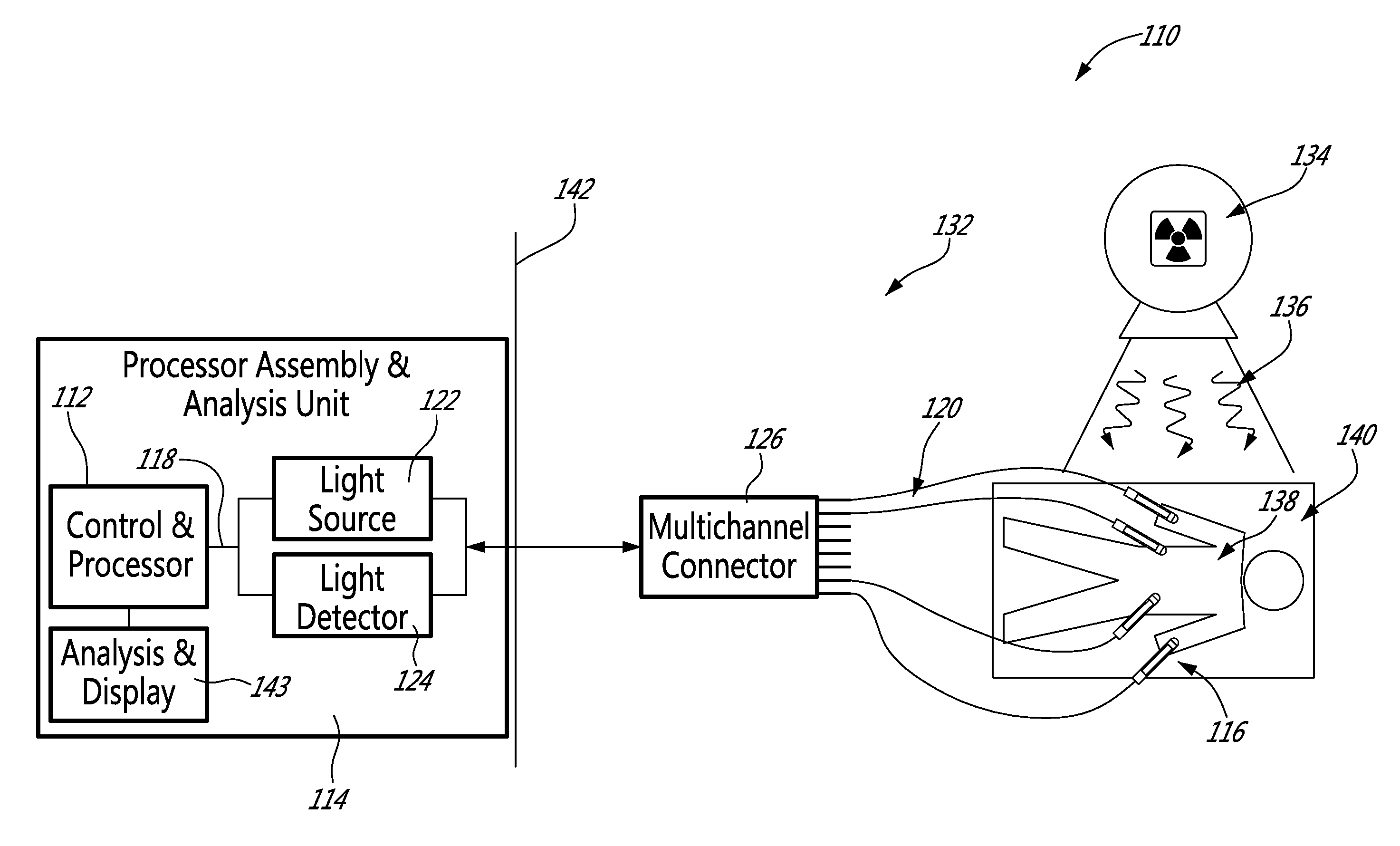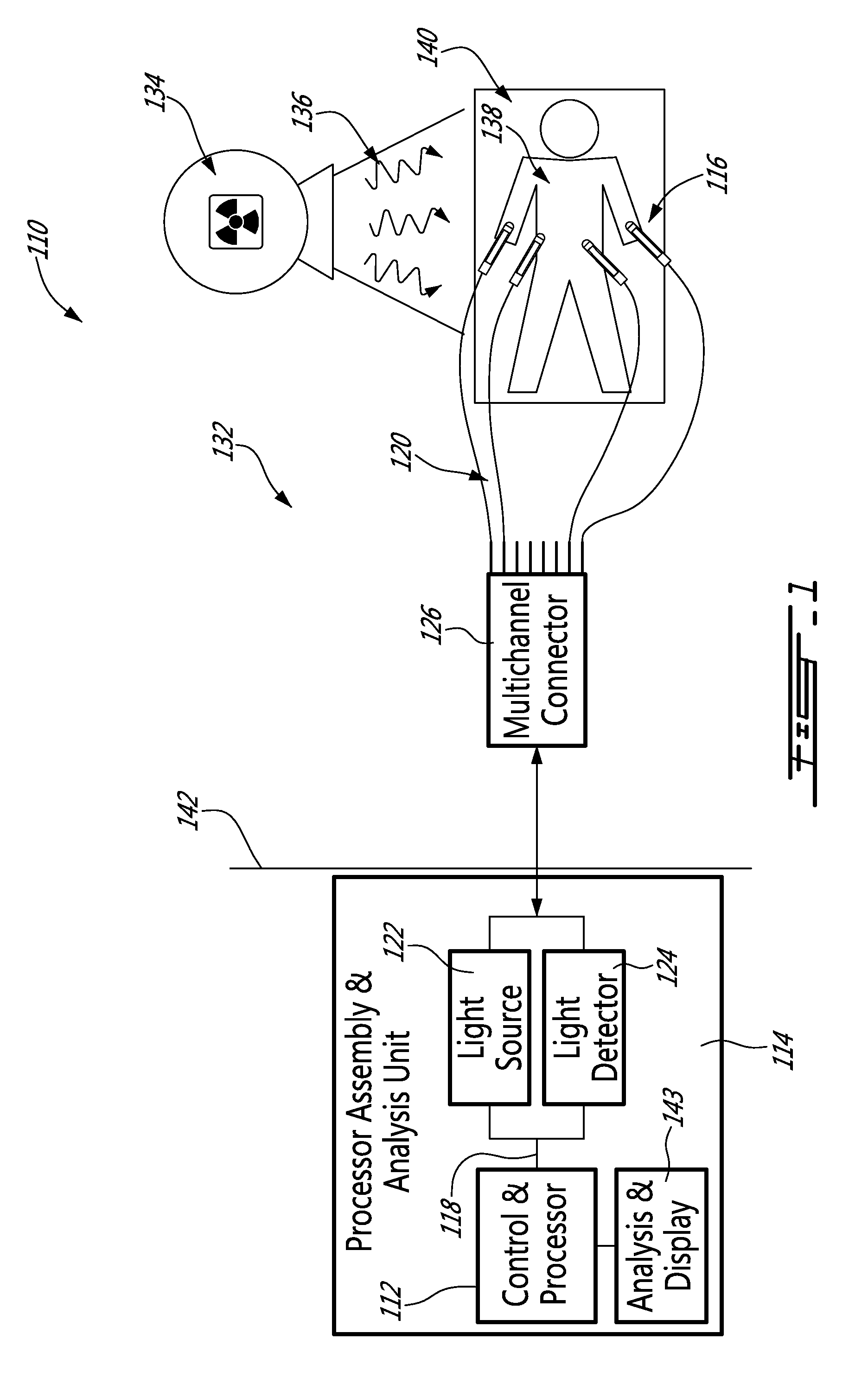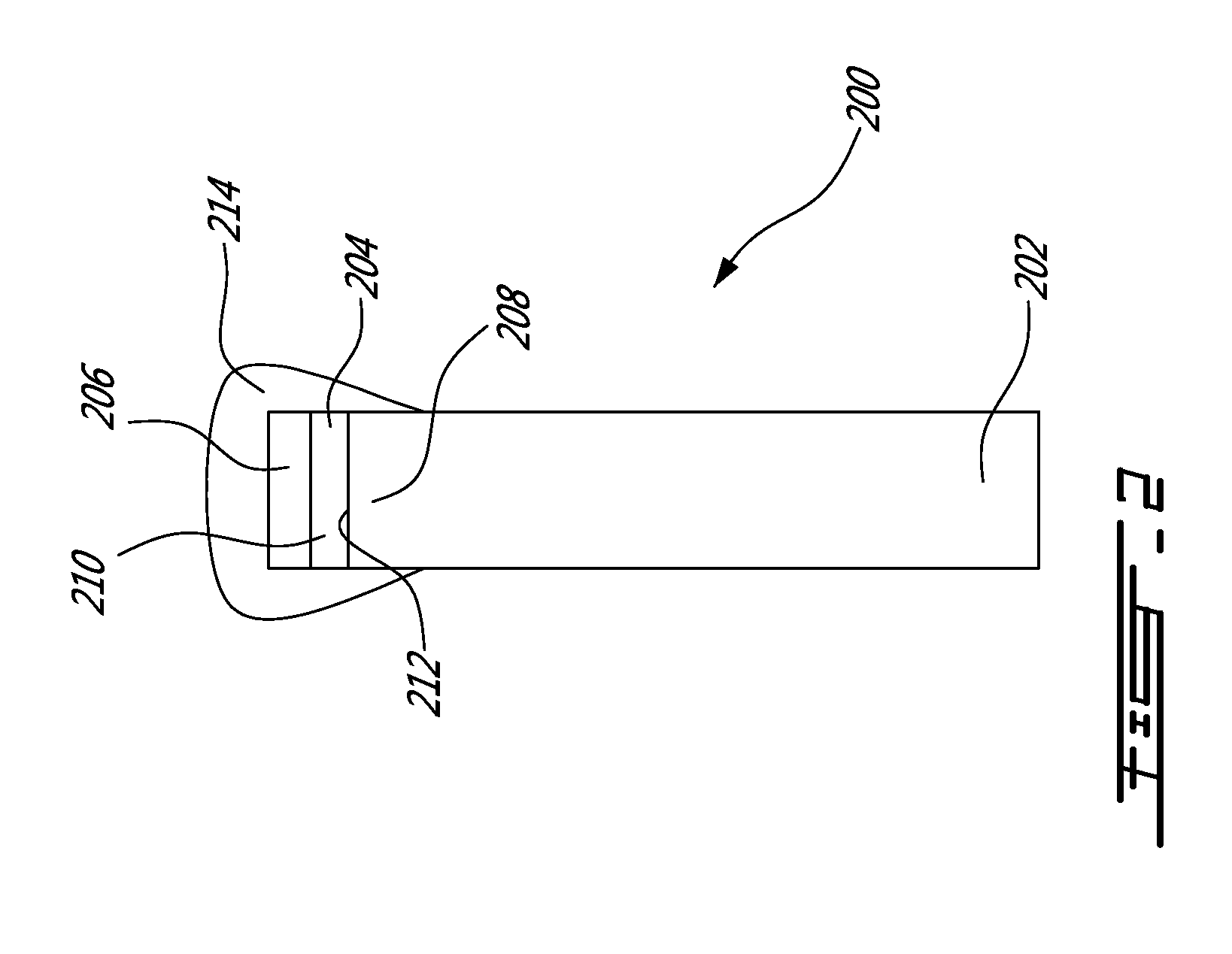Fiber optic radiochromic dosimeter probe and method to make the same
a fiber optic and radiochromic technology, applied in the field of fiber optic radiochromic dosimeter probes, can solve the problems of errors, serious complications, and complex modern dose calculation and delivery techniques, and achieve the effect of accurate localization of radiation sensitive layers and safe use on patients
- Summary
- Abstract
- Description
- Claims
- Application Information
AI Technical Summary
Benefits of technology
Problems solved by technology
Method used
Image
Examples
example 1
[0146]An example of a fabrication process for the dosimeter probe is as follows. A radiochromic thin film was spin coated on a 3M Vikuiti™ ESR mirror using a Solitec spin coater. The ESR mirror being flexible, a piece of about 25 mm by 25 mm was affixed on a glass substrate to avoid any deformation due to the vacuum that holds the substrate in place during the spinning. The quantity of radiochromic fluid used was 150 μl, and the rotation speed was set to 730 rpm for the duration of 11 seconds, yielding an average thickness of the desired 15 μm. A ESKA® acrylic fiber developed and manufactured by Mitsubishi was used. The core diameter was 486 μm, the fiber diameter was 500 μm and the numerical aperture was 0.51. The unjacketed plastic optical fiber (POF) was cut to 1.05 m length to ensure the final length is 1 m. One end of the plastic fiber was connectorized with a SMA connector. On the probe side, the plastic fiber was polished. If necessary, an ultrasound bath was used to clean th...
example 2
[0148]A real-time fiber optic dosimeter probe was fabricated by spin coating, to a 8.5 μm thickness of a radiochromic radiation sensitive material on a dielectric mirror. The material was then cut as a slice of about 2 cm long and 500 μm wide. A 1 mm long poly(methyl methacrylate) capillary having an outer diameter of 1 mm and an inner diameter of 500 μm was cut 1 cm long. A 500 μm side hole was drilled through the capillary near the center; the capillary was held in a fiber optics holder and the radiation sensitive slice was slipped through the capillary side hole. Two polished ends of 500 μm plastic multimode optical fibers were inserted in both ends of the capillary and firmly pressed on the radiochromic coated mirror. Small drops of a cyano-acrylate adhesive were used to affix both fibers at the capillary ends. A low viscosity epoxy adhesive was finally prepared and injected in the side holes of each probe to affix the radiochromic element on the optical fibers and match the ref...
example 3
[0150]A real-time fiber optic dosimeter probe was fabricated by depositing a 1.7 μm thick radiochromic thin film on a dielectric mirror that was afterwards assembled on a fiber tip. A protective coating covered the assembled probe. The outside diameter of the plastic optical fiber was 500 μm. The fiber optic dosimeter probe was irradiated at a dose rate of 500 cGy / minute to a total dose of 5 Gy. Absorbance spectra of the fiber optic radiochromic dosimeter probe were measured before and after irradiation as shown in FIG. 5. After irradiation, the absorbance increased in the 585 nm and 636 nm bands. The real-time measurement of the optical density (OD) change, before, during, and after irradiation at 500 cGy / minute to 500 cGy is shown in FIG. 6, demonstrating that the optical dosimeter probe using radiochromic thin film at the tip is real-time sensitive.
[0151]Absorbance spectra acquired before and after irradiation of the fiber optic dosimeter probe demonstrate principle functionality...
PUM
| Property | Measurement | Unit |
|---|---|---|
| thickness | aaaaa | aaaaa |
| thickness | aaaaa | aaaaa |
| thickness | aaaaa | aaaaa |
Abstract
Description
Claims
Application Information
 Login to View More
Login to View More - R&D
- Intellectual Property
- Life Sciences
- Materials
- Tech Scout
- Unparalleled Data Quality
- Higher Quality Content
- 60% Fewer Hallucinations
Browse by: Latest US Patents, China's latest patents, Technical Efficacy Thesaurus, Application Domain, Technology Topic, Popular Technical Reports.
© 2025 PatSnap. All rights reserved.Legal|Privacy policy|Modern Slavery Act Transparency Statement|Sitemap|About US| Contact US: help@patsnap.com



